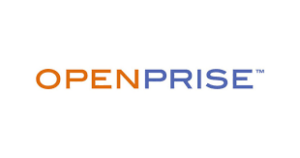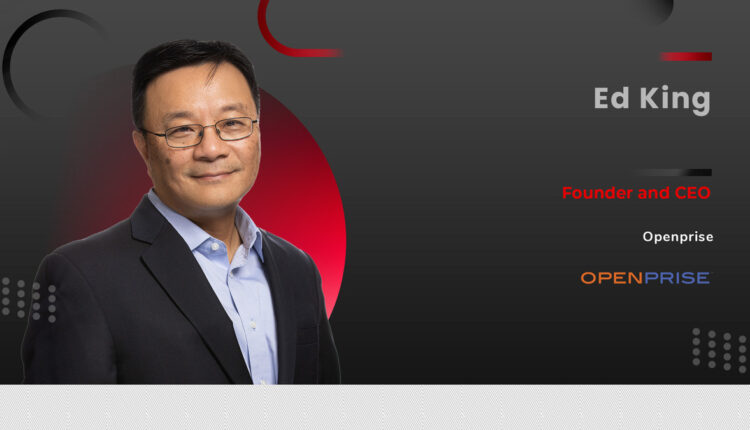Hi Ed, could tell us about your journey in technology?
I’m a mechanical engineer by education and my first jobs were building automated equipment to manufacture hard disk drive components. That led me down a path to enterprise software product management, product marketing, marketing, and eventually, the founding of Openprise.
My domain expertise started in manufacturing and supply chain, and shifted to middleware, data, and security. Throughout this twisty journey, there’s been one consistent thread: my interest in making hardcore technology more accessible and usable to people who don’t have the training and skills of an engineer. In fact, I founded Openprise because when I was running marketing, I saw how my team’s ability to execute and pivot was increasingly dependent on the technologies we used and the level of support we were able to get from the IT team.
While there’s been an explosion in engagement technologies and the sheer amount of data available to marketers, there are no usable tools that let non-programmers on sales and marketing operations teams work with this data. Additionally, these cool new engagement technologies are only about 20% effective because the data these technologies capture and use is often of poor quality.
Seeing these fundamental shifts in marketing, I created the Openprise RevOps Automation platform—a technology platform enabling revenue operations teams to orchestrate data, automate processes, integrate people and systems, and do it at 10x the speed of what IT can typically support.
What challenges did the Covid-19 pandemic pose for your team?
Openprise was always a semi-remote team, even before COVID. Our team only goes into the office one to two days a week. So the remote work enforced by sheltering at home probably had a much smaller impact on our team than most. We have a solid company culture; we’ve won the Inc. Best Workplace award for the last three years. Maintaining this strong company culture while we doubled our headcount during the COVID pandemic certainly took a lot of concerted effort from everyone. We focused on keeping our distributed employees motivated and connected, while also respecting the increasing level of Zoom fatigue and anxiety that has crept into everyone’s lives.
Also Read: MarTech 360 Interview With Umberto Milletti, Head Of Engineering, Demandbase
What sets Openprise apart from the competition?
Our competition focuses on delivering technical solutions for specific business problems within revenue operations, like data quality, lead routing, or attribution. Buying these point solutions and dealing with all the data silos that come along with them means most medium to large enterprises have accumulated complexity and technical debt to the point that adding more technology to the technology stack creates more manual work and decreases the go-to-market team’s ability to execute.
What sets us apart from the competition is the Openprise RevOps Automation platform, which helps our customers create new automation capabilities while reducing the complexity of their technology stack. Our platform enables revenue operations teams to quickly build automation and self-service capabilities for their go-to-market teams, and keep up with the constant changes to the business. We enable revenue ops teams to create scalability and 10x agility for the organization in a way that’s also safe and compliant. Whereas traditional IT tooling focuses on centralized command and control, Openprise strikes the critical balance of enabling operations teams to innovate in a safe and compliant way.
How do you envisage Marketing Automation evolving, in the years to come?
Marketing automation has come of age in the last decade by step-wise evolution, without the benefit of any common data and automation infrastructure. That is why every piece of marketing and sales technology is essentially a vertically integrated application, with its own database, its own automation feature, and its own extension framework.
This siloed approach creates exponential complexity as the technology stack increases in size. Most medium to large enterprises today struggle to keep their technologies working correctly. It’s hard to add new capabilities when it takes so much staff and effort to keep existing technologies working properly. This is not a scalable architecture to enable an enterprise to continue to leverage new technologies.
What we see emerging is a horizontal split in the technology stack. On the top layer you have engagement and end user technologies supported by a common data and automation infrastructure layer. This shared infrastructure layer enables more seamless data sharing and workflow integration without each application having to reinvent the wheel. This shared infrastructure layer breaks down data silos and makes it possible to have integrated visibility and operations across sales, marketing, and customer success, and to create a more consistent customer experience across siloed engagement channels.
What 3 things that business owners can do to optimize their digital outreach?
COVID drove almost all customer engagements online, and in the process raised the noise level that marketers must break through. To break through you must do these three things:
- Be hyper-focused and personalized with your engagements. If you can’t create a sense of relevance with your prospect, you won’t get their attention and precious time. To do that, you must have the ability to target precisely. That means you need to have a well-defined Ideal Customer Profile and quality data to segment and identify your customer profiles, including possible first and third-party intent data.
- As Forrester Research highlights in their new B2B Revenue Waterfall Model, 80% of a SaaS company’s revenue comes from existing customers, so beyond targeting, personalization must include the ability to incorporate all the engagements you have across departments within your customer’s organization.
- To know if your digital outreach is working or not, you need the ability to measure. That means collecting the necessary data across channels and silos so you have attribution and campaign performance metrics to help fine-tune your efforts and allocate investment.
As a marketing leader, what are your thoughts on how ROMI and its use as a metric to define success?
For marketing to be relevant, it must be able to measure its contribution to the business. And ROMI is key to not only demonstrating relevance, but also to demonstrating how well the marketing team is focusing and executing. As CEO, I tell my marketing team that your program budget is unlimited if you can show a positive ROI.
Marketers often get sloppy or ignore ROI completely when the business is going well, because there’s plenty of budget and management isn’t asking too many questions. However, a business goes through cycles. During down cycles, the marketing budget is often the first place a CFO looks to cut, and it’s easy to cut because the ROI is usually not clear. Attribution analysis and ROI metrics are not just a way to measure success and invest in what works, but also an insurance policy for the marketing budget.
How do you see Marketing Automation impacting the traditional sales and Marketing funnels?
You can argue that there’s no “traditional” marketing and sales funnel anymore. With the proliferation of engagement channels and availability of information, the buyer’s journey is now a zigzag path wandering through the ether. Instead of forcing a prospect through a unidirectional funnel, modern marketing is more about gaining a deep understanding of the prospect’s buyer persona, monitoring buying behaviors, and offering the right engagement at the right time in an attempt to pull the prospect towards desirable outcomes.
To achieve this feat requires a highly data-driven approach and the ability to experiment and react. Marketing automation technology, coupled with increasingly guided selling tools that touch customers across the entire buyer’s journey, plays a critical role in gathering and making sense of all the data and executing on the automation to take advantage of the data-driven insights.
Could you name one person that you would like to see featured here?
Alistair Woolcock, Chief Strategy Officer, revenue.io
Could you name the Top 5 apps/platforms that you use for marketing?
- Salesforce
- Marketo
- Openprise RevOps Automation platform
- Google Analytics
- WordPress
What advice would you give to someone who aspires to be a business leader?
Learn to sell. The more senior you become, the more everything you do is related to selling—whether it’s selling to customers, investors, partners, suppliers, managers, colleagues, or employees. And the most effective sellers are the ones with the most empathy, able to put themselves into the shoes of those they’re trying to convince, and ask why they should care and understand what motivates them.
Also Read: MarTech 360 Interview With Paul Lewis, Chief Customer Officer and CMO at Adzuna


Comments are closed.